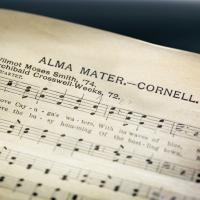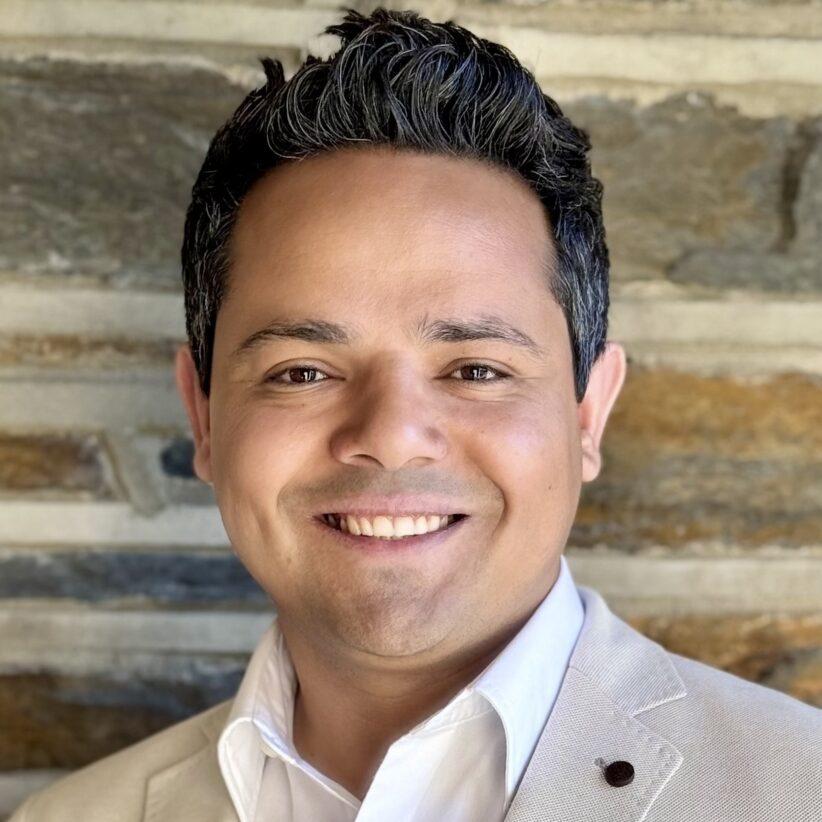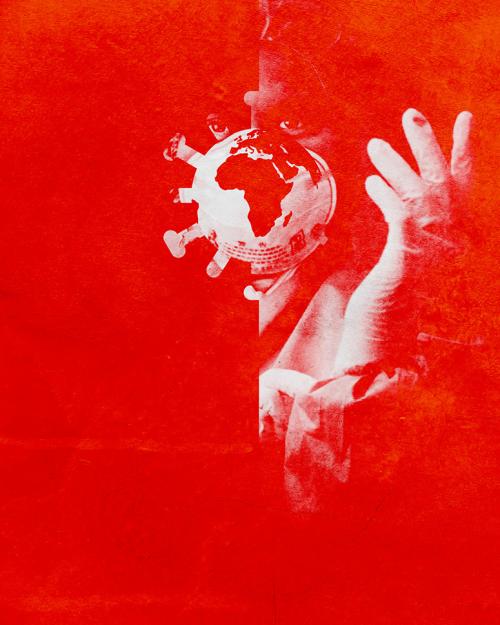Could tiny robots help perform surgery? How do memories form? Does a father’s touch influence a child’s social brain? What is the Covid-19 pandemic’s effect on the practice of global health? How can better scientific tools give insight into human history and conflict – and into the early universe?
Faculty members in the College of Arts and Sciences will delve into these questions and more, supported by A&S New Frontier Grants. The College has awarded more than $2.5 million to 13 research projects across the sciences, social sciences and humanities in this latest round, for novel investigations ranging from quantum computing to foreign policy development and from heritage forensics to effects of climate change. To date the program has funded 34 projects for a total exceeding $6 million, all of it from philanthropy.
“We are delighted to foster leading-edge research by creating pathways from bold ideas to breakthrough discoveries and potentially game-changing impact,” said Ray Jayawardhana, the Harold Tanner Dean of the College of Arts and Sciences, who created the program along with the A&S leadership team. “With characteristic curiosity, creativity, and leadership, our faculty venture into uncharted intellectual territory, and New Frontier Grants enable critical early-stage work that set them up for success.”
Grant recipients from the past two years have not only made significant advances in their scholarship, but also won prestigious honors from organizations such as the Library of Congress and the Sloan Foundation and secured additional funding from the likes of the National Science Foundation and the Moore Foundation. “It is thrilling to see the tremendous progress made by previous New Frontier Grant recipients,” Jayawardhana noted.
New Frontier Grants are made possible by gifts from donors, including Scott Fowkes ’85, Carolyn Wiener ’69, Miriam Shearing ’56, and Fritz Demopoulous and Elaine Wong ’97.
Several of the 2023 grants fund diverse explorations of health, from the miniscule to the interpersonal to the global.
In “Strong Amphibious Robots” Itai Cohen, professor of physics, will engineer active systems at the microscale using new, stronger actuators to fabricate microscopic robots that can operate in aqueous environments or – a new innovation – in air. This proof-of-concept amphibious robot demonstration will signal a new era in the design of microscopic machines, opening the door to developing reconfigurable optical metamaterials that fit on an optical fiber and shrinking surgical tools.
On the cancer treatment front, Nandini Ananth, associate professor of chemistry and chemical biology, will perform quantum dynamic simulations, through “Rational Design of Heterometallic Complexes as Anticancer Agents,” to uncover the key electronic and nuclear interactions in heterometallic complexes that result in improved metastatic tumor toxicity in preclinical studies, gaining insights to increase the database of potential heterometallic drug candidates.
In "Black Reproductive Justice Archive,” Tamika Nunley, associate professor of history and Sandler Family Faculty Fellow, will create a digital archive of oral histories that features firsthand accounts from people at the forefront of addressing the Black maternal health and reproductive crisis. This database of oral histories will also function as a multimedia platform for understanding Black women’s long historical struggle for reproductive justice.
In “The father’s touch: How paternal deprivation impacts the functional social brain,” Alex Ophir, associate professor of psychology, will investigate how the underlying neural processes that regulate behavior are altered by poor or absent parent-child interactions, particularly involving fathers. He and fellow researchers will profile active neurons regulating the ‘social brain’ in animals that were raised with varying degrees of access to a father, providing foundational data necessary to examine the central hypothesis that paternal care alters the function of the developing social brain – and behavioral resilience.
Another project focuses on the fact that mammals have evolved along with the complexity of their “social world,” and social experiences make up for extremely rich memories that get imprinted on our brains from birth. In “Neural circuit mechanisms of memory in a natural environment,” Azahara Oliva, assistant professor of neurobiology and behavior, will explore the richness and complexity of memories of groups of mice living in close-to-natural environments by using wireless technology to record brain activity in an outdoor enclosure facility at Cornell. Results from this project, done in collaboration with Michael Sheehan, associate professor of neurobiology and behavior in the College of Agriculture and Life Sciences, could provide unprecedented insights to current understanding of the brain.
Timothy C. Campbell, professor of Italian studies, will consider health at the world-wide scale in “The Biopolitics of Global Health After Covid,” bringing together sociologists, philosophers, and anthropologists from different parts of the world to discern the Covid-19 pandemic’s effect on how global health is understood and practiced today. The collaborators will investigate how the pandemic changed perceptions of illness, health, science and ethics and reconfigured relationalities between doctors and patients, institutions and subjects, among neighborhoods and communities, and in politics and governance. The project pursues a future in which institutions are better able to meet the challenges presented by the next global health crisis.
The history and future of the global climate are considered in two of this year’s projects.
In “Molecular Adaptations to Life with Oxygen on Earth,” Nozomi Ando, associate professor of chemistry and chemical biology, will analyze a newly-discovered ancestral group of ribonucleotide reductases, an ancient family of enzymes that serves as a molecular fossil record for life’s transition from an anoxic to oxygenated planet. Understanding how this enzyme family invented multiple solutions to cope with increasing oxygen availability will allow insight into how life adapts to changes in climate.
In “Developing an endangered equid as an integrative model for understanding species persistence and extinction,” Andrew G. Clark, the Jacob Gould Schurman Professor of Population Genetics, together with postdoctoral researcher Arielle Sarine Fogel, will address the biodiversity loss crisis by developing an interdisciplinary model for animal conservation, generating genomic resources for Grevy’s zebras, an endangered animal for which long-term data on behavior, disease and ecology are available. This work will be a first step towards integrating genomic, behavioral, ecological, demographic and computational approaches to understand the biology and evolution of threatened species, with implications for conservation as well as human health, climate change and the global economy.
Other projects explore our world – past and present – and those beyond.
Jessica Chen Weiss, the Michael J. Zak Professor for China and Asian Pacific Studies, will use a New Frontier Grant to help launch the Cornell U.S. – China Policy (CUSP) Initiative to bring together academics, experts and practitioners to evaluate and envision potential policy solutions and future trajectories in U.S. policy toward China and the world. CUSP will draw on a wealth of Cornell faculty expertise in security and strategy; democracy and society; tech, trade and talent; and global governance and sustainability.
Expanding the scope of exploration is the focus of “Measuring the Structure and Evolution of Our Universe with Novel mm-Wavelength Spectrometers for the Fred Young Submillimeter Telescope.” On-chip spectrometers are a promising new technology for developing ultra-sensitive cameras for studying faint astrophysical signals in the millimeter wavelength range, in particular from the epoch about one billion years after the Big Bang. Abigail Crites, assistant professor and the Fred Young Faculty Fellow in physics, and Michael Niemack, associate professor of physics and astronomy, will develop prototypes of these new detectors and test them in a cryogenic facility at Cornell. This laboratory demonstration will pave the way for developing larger scale spectrometers for deployment on the Fred Young Submillimeter Telescope in Chile’s Atacama Desert to investigate the structure and evolution of the universe.
And zooming into the particles at the heart of quantum computing, Debanjan Chowdhury, assistant professor of physics, will work toward developing new protocols to simulate the dynamical properties of exotic quantum materials on noisy intermediate-scale quantum computing devices (NISQ) in his NFG project “Probing dynamics of electronic quantum crystals on near-term quantum computers.” A special class of quantum magnets, whose properties cannot be computed reliably on classical computers and which remain poorly understood in spite of decades of research, will be studied using NISQ devices. This study could lead to fundamental new insights into long-standing theoretical puzzles and help direct the search for new material routes to realizing such phases of matter.
In “Heritage Forensics: Archaeology, Law, and Politics in the 21st Century,” Lori Khatchadourian, associate professor in Near Eastern Studies and anthropology and Adam T. Smith, Distinguished Professor of Arts and Sciences in Anthropology, will build on the work of their research group, Caucasus Heritage Watch, to advance the theory and practice of heritage forensics, a form of engaged research they are developing at the intersection of archaeology, cultural aerospace, law and politics. Heritage forensics uses geospatial technology and media analysis to investigate attacks on the fragile material record of the human past. As public scholarship, this research supports both preservation and accountability, shining light on abuses of power, post-truths, cultural erasure, and the erosion of human rights as these unfold in the medium of tangible heritage. As critical research, the work examines not only the forces that make and unmake heritage, but also the tools of forensic investigation.
Radiocarbon (14C) is key to chronology in archaeological, environmental and paleoclimatic research and a proxy for solar activity. With recent advances in high-precision 14C measurement now available, Sturt Manning, Distinguished Professor of Arts and Sciences in Classical Archaeology, proposes that seasonal variations become important for dating and climate. In “Intra-Annual 14C Offsets and the Future of High-Precision 14C Chronology,” he will work toward improving high-precision radiocarbon dating by testing and articulating a 14C offset that takes into account the growing seasons of trees and other plants, which are ever more key as the field becomes higher and higher precision.







